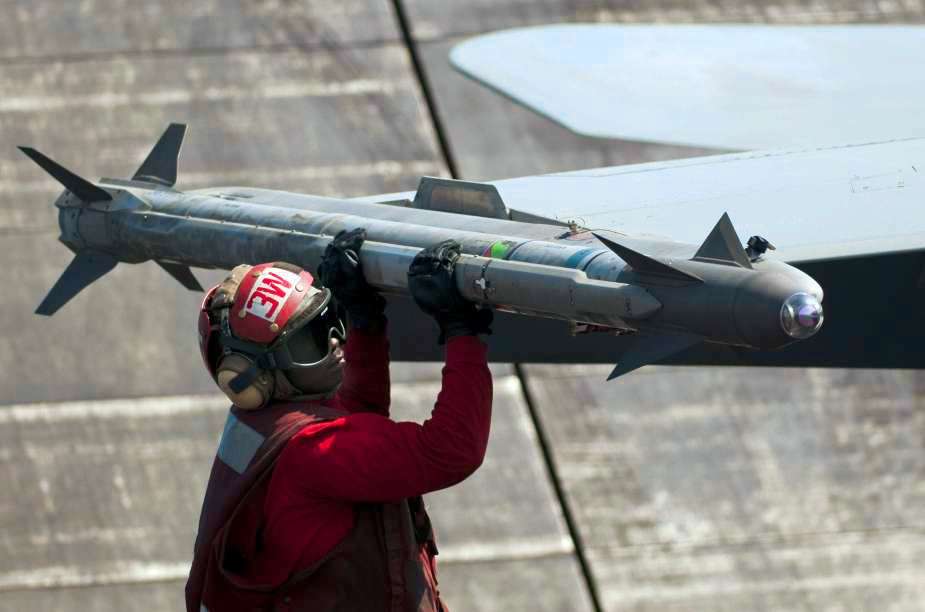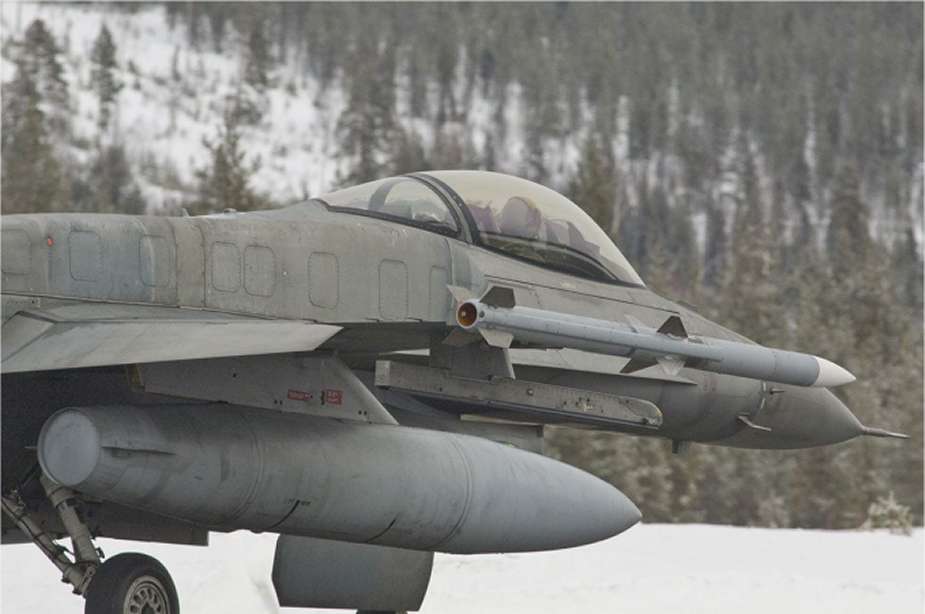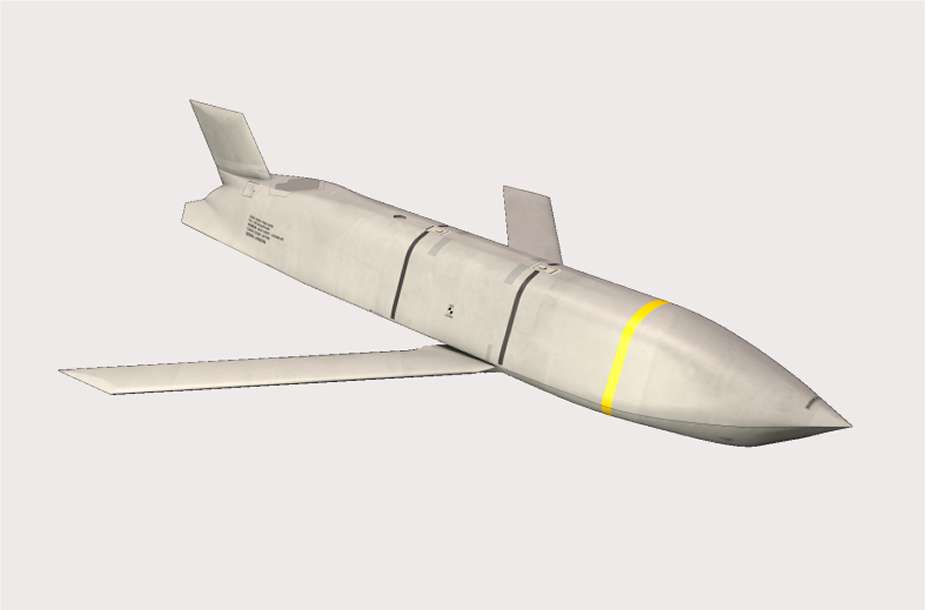Breaking news
Poland to acquire $3.68 Billion worth of US air-to-air and air-to-surface missiles.
On March 12, 2024, the US State Department approved three potential Foreign Military Sales (FMS) of missiles to Poland. The total estimated cost for these three FMS is $3.68 billion. These sales comprise a sale of 821 AGM-158B-2 JASSM-ER missiles, estimated at $1.77 billion, a sale of 745 AIM-120C-8 AMRAAM missiles, estimated at $1.69 billion, and a sale of 232 AIM-9X Sidewinder Block II missiles, estimated at $219.1 million.
Follow Army Recognition on Google News at this link

The Air Intercept Missile (AIM)-9X Sidewinder represents the latest advancement in the Sidewinder family of US short-range air-to-air missiles. (Picture source: NAVAIR)
The first of the approved sales comprises 232 AIM-9X Sidewinder Block II Tactical Missiles, coupled with 16 AIM-9X Sidewinder Block II Tactical Missile Guidance Units. This sale, valued at $219.1 million, includes ancillary equipment such as missile containers, training aids, active optical target detectors, spare parts, and support equipment, demonstrating a comprehensive approach to logistical and program support.
The Air Intercept Missile (AIM)-9X Sidewinder represents the latest advancement in the Sidewinder family of US short-range air-to-air missiles, featuring a high off-boresight focal-plane array seeker and a maneuverable airframe with an improved infrared counter-countermeasures capability. Incorporating legacy components from the AIM-9M, it offers enhanced performance and the ability to engage ground targets, marking a notable evolution in its capabilities.
Leveraging its datalink, thrust vectoring maneuverability, and advanced imaging infrared seeker, the AIM-9X Block II variant enables engagements of targets behind the launching aircraft. With its offensive and defensive capabilities, it contributes to air superiority in Beyond Visual Range air-to-air engagements, aligning with strategic objectives outlined in US defense guidance.
Manufactured by Raytheon, this short-range air-to-air missile is powered by an ATK MK-139 solid-propellant rocket motor, measures 3.02 meters in length, and has a launch weight of 84.37 kg. With classified range and speed, it maintains tactical flexibility. Equipped with a solid-state, infrared homing system and an annular blast fragmentation warhead, the AIM-9X Sidewinder demonstrates advancements in air-to-air combat technology.
The second approved sale features 745 AIM-120C-8 Advanced Medium Range Air-to-Air Missiles (AMRAAM), amounting to an estimated total cost of $1.69 billion. Additionally, the sale includes 16 AIM-120C-8 AMRAAM guidance sections and 50 LAU-129 Guided Missile Launchers. Similar to the JASSM-ER sale, this package encompasses a range of support elements to facilitate seamless integration and operation.
The AIM-120 AMRAAM is recognized for its beyond-visual-range capability and active transmit-receive radar guidance system, making it a significant asset in modern air combat. With a production history spanning over three decades, it stands as a prominent example of advanced missile technology. Weighing 161.5 kg and capable of reaching speeds up to Mach 4, the AIM-120 operates effectively in various weather conditions, providing versatility across different fighter aircraft platforms.

The AMRAAM missile's development has led to four main variants, each introducing specific improvements such as extended range, and enhanced guidance systems, for compatibility with newer aircraft. (Raytheon)
Additionally, the AIM-120 family comprises several variants, each designed to meet specific operational needs. From the AIM-120A, characterized by its enlarged wings and fins, to the AIM-120D, featuring extended range and enhanced guidance systems, these variants showcase continuous advancements in missile technology. The AIM-120C, tailored for compatibility with stealth aircraft, and the AIM-120D, boasting superior range and kill probability, highlight the adaptability and efficacy of the AMRAAM platform.
In particular, the AIM-120C-8 variant, also known as the export version of the AIM-120D-3, introduces significant improvements over its predecessors. Developed under Raytheon's Form, Fit, Function, Refresh (F3R) program, the AIM-120C-8 incorporates an expanded no-escape envelope and improved high-angle off-boresight capabilities, enhancing its effectiveness in complex combat scenarios. Advancements include the integration of a GPS satellite navigation system receiver and a two-way data transmission line, resulting in an increase in launch range compared to previous variants.
The third approved sale encompasses 821 AGM-158B-2 Joint Air-to-Surface Standoff Missiles with Extended Range (JASSM-ER) All-Up-Rounds, valued at approximately $1.77 billion. Alongside the missiles, the package includes a comprehensive array of support elements such as classified test equipment, weapon system support, integration, and test support, classified software delivery and support, technical documentation, transportation, and engineering, technical, and logistics support services.
Developed by Lockheed Martin, the Joint Air-to-Surface Standoff Missile (JASSM) is a stealthy, air-launched cruise missile developed by Lockheed Martin for the United States Armed Forces. Its extended-range variant, the JASSM-ER, was developed to address the US Air Force's need for improved capabilities. Despite sharing the same external dimensions as its predecessor, the JASSM-ER incorporates a more efficient engine and a larger fuel volume, attributes that contribute to its extended range. The missile maintains a 70% hardware commonality and 95% software commonality with the original AGM-158 JASSM.
The JASSM-ER is designed to target and destroy high-value, well-defended targets from a standoff distance. Equipped with a 1,000-pound (450 kg) armor-piercing warhead, it entered service in 2014. Lockheed Martin supplied the US Air Force with a total of 2,000 JASSMs, including both the original and extended range variants, by September 2016. With a weight of approximately 1,200 kg and a wingspan of 2.7 m, the JASSM-ER is powered by a Williams F107-WR-105 turbofan engine. Notably, it has a range exceeding 926 km, a significant enhancement from the original JASSM's range of about 370.4 km. The missile utilizes GPS, INS, and IIR for guidance, target recognition, and terminal homing.

Despite sharing the same external dimensions as the JASSM, the JASSM-ER incorporates a more efficient engine and a larger fuel volume. (Picture source: Lockheed Martin)


























